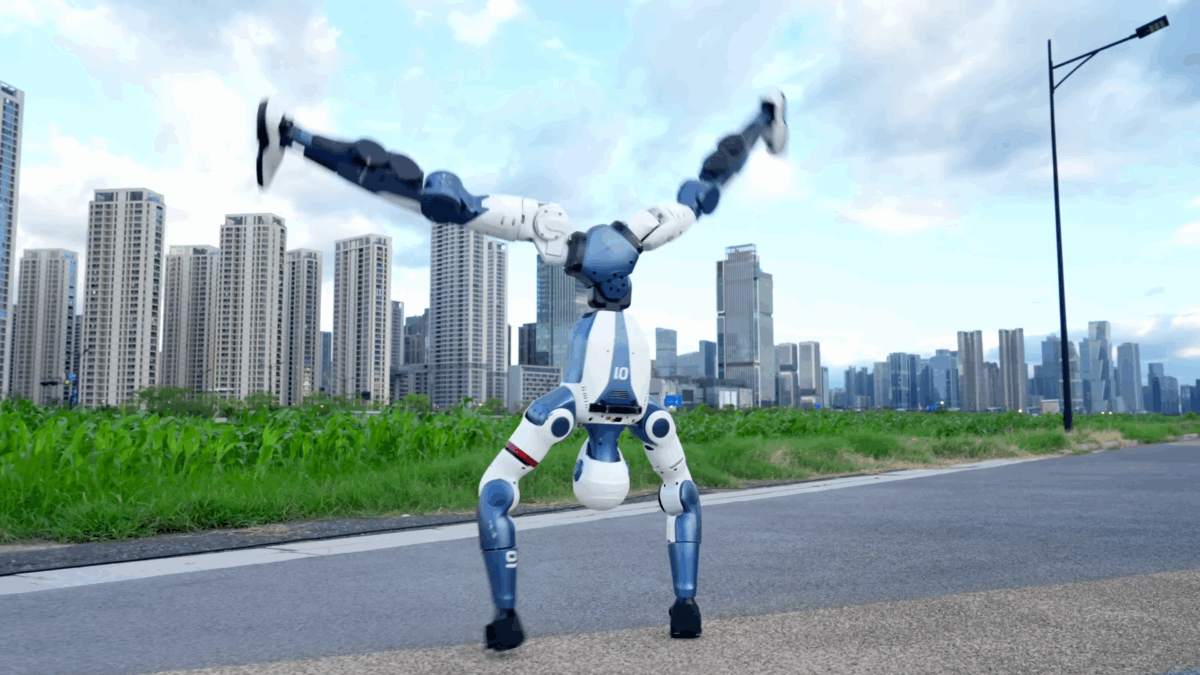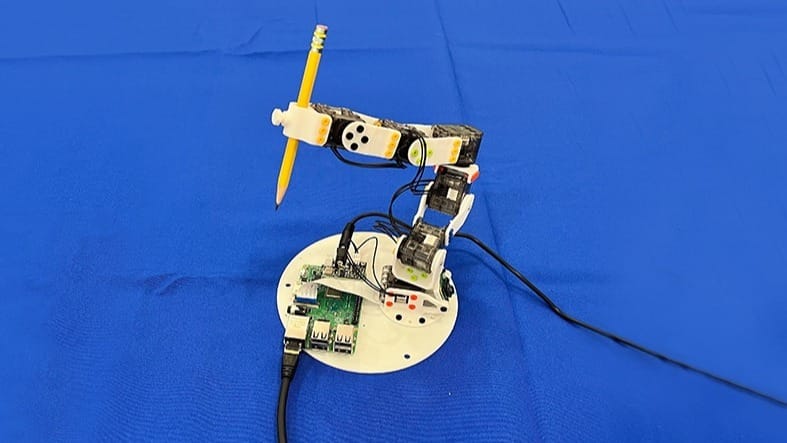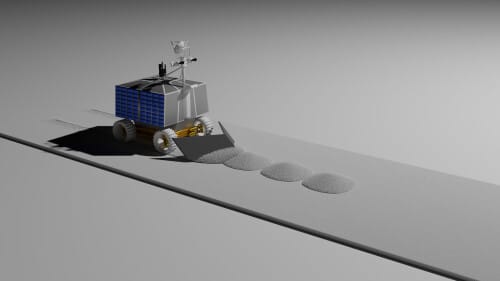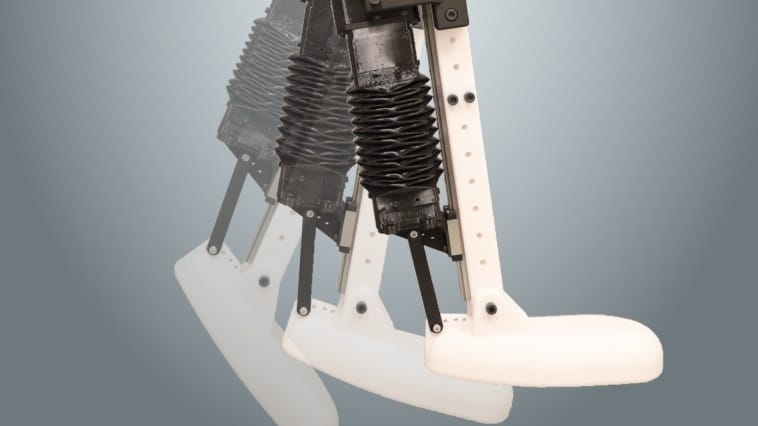- The Rundown Robotics
- Posts
- Unitree's $6K humanoid for everyone
Unitree's $6K humanoid for everyone
PLUS: MIT's 'body aware' robot hand
Good morning, robotics enthusiasts. Chinese robotics company Unitree just dropped the R1 — a 4-foot-tall, 55-pound humanoid packed with 26 joints and a shockingly low $5,900 price tag.
Sleek, nimble, and way cheaper than rivals like Tesla and Figure, could this “sports robot” be the one that finally brings humanoids into the mainstream?
In today’s robotics rundown:
Unitree debuts humanoid for under $6K
Robotic hand learns by ‘body awareness’
Space rovers just got a major fix
Bioinspired muscles for human-like bots
Quick hits on other robotics news
LATEST DEVELOPMENTS
UNITREE

Image source: Unitree/YouTube
The Rundown: China’s Unitree just unveiled its most game-changing — and affordable — humanoid yet: the R1. Standing four feet tall with 26 joints and weighing just 55 pounds, this nimble “sports robot” is set to hit the market at only $5,900.
The details:
Available for shipping now, the R1 drastically undercuts competitors like Tesla’s Optimus, Figure 02, and its own elder sibling, G1 (priced at $13,800).
The humanoid boasts 26 degrees of freedom that enable movements such as walking, waving, crouching, tumbling, and simple boxing.
R1’s brain runs on a quad-core Cortex-A76 CPU backed by perception and control algorithms, integrated cameras, and optional AI modules.
The current version offers developer and research customization but is not meant for practical household chores or factory work.
Why it matters: The launch is both a publicity move and a direct challenge to U.S. and European robotics firms. By shipping a functional, affordable humanoid now — capable of pre-programmed stunts like cartwheels — Unitree is testing global demand and daring customers to imagine what the first gen of personal robots could truly become.
MIT

Image source: MIT CSAIL
The Rundown: MIT’s CSAIL lab developed a soft robotic hand that — rather than being packed with embedded sensors or precision hardware — relies entirely on the feed from a single consumer-grade camera trained on its movements.
The details:
Detailed in Nature, the new system, dubbed Neural Jacobian Fields (NJF), teaches robots to understand their bodies, using only vision.
At its core, NJF uses a deep neural network trained on multi-view video footage of a robot performing random actions.
In demos, the NJF-guided hand handled everything from marshmallows to plasticware, learning new dexterity from scratch using just ordinary cameras.
This vision-based approach lets robots adapt and improvise without tactile sensors, enabling them to learn new tasks and self-correct after minor damage.
Why it matters: MIT’s NJF is potentially redefining what robots can do by teaching them to perceive their own motion through vision. This innovative approach allows robots to become more adaptable, resilient, and practical for real-world environments, where unpredictability is the norm, not the exception.
SPACE ROBOTICS

Image source: UW–Madison/Dan Negrut
The Rundown: University of Wisconsin engineers discovered a fix that could prevent NASA’s robotic space rovers from getting their wheels stuck in extraterrestrial soil — by correcting a physics error in how they are tested pre-flight here on Earth.
The details:
The crux of the issue is simple but critical: wheels grip and sink in planetary soil very differently in low-gravity environments.
Most prototype testing happens on Earth without adjustment for this factor, ignoring the impact of gravity exerted on sand particles on the Moon or Mars.
These flawed assumptions helped strand NASA’s Spirit rover in Martian sand in 2009 — it is still stuck there despite numerous rescue attempts.
The team used open-sourced computer simulation software called Chrono and soil mechanics models to better mimic the conditions on Mars and the Moon.
Why it matters: The takeaway? The team says that engineers need to improve their test setups — using virtual models or creative gravity-neutral environments — to truly match extraterrestrial conditions. Otherwise, the next billion-dollar rover might also stall out in alien dust, just like Spirit.
NORTHWESTERN UNIVERSITY

Image source: Northwestern University
The Rundown: Researchers at Northwestern University unveiled a new artificial muscle that could serve as the heart of next-gen, untethered robots designed to move and interact with the world much like living creatures, not mechanical objects.
The details:
The muscle is composed of soft, electrochemical actuators that contract and expand, enabling lifelike flexion and extension rather than jerky motions.
The team integrated the muscle into a life-sized humanoid leg, replicating not just the outer shape but the full musculoskeletal architecture.
The robot leg features 3D-printed plastic bones, elastic tendons, and embedded sensors that provide proprioceptive “touch.”
The artificial muscles are arranged in trios — analogous to the human quadriceps, hamstring, and calf — allowing it to move more like a human would.
Why it matters: The demo leg was able to generate enough power to kick a volleyball from a stationary position, an impressive feat that illustrates both the strength and speed of these soft actuators. While in nascent stages, this innovation could open new doors for applications in prosthetics and human-robot collaboration.
QUICK HITS
📰 Everything else in robotics today
Tesla is reportedly behind on its promise to build 5K Optimus humanoids this year, with The Information stating it has only produced a few hundred.
The 2025 World Artificial Intelligence Conference (WAIC) in Shanghai, July 26-28, showcased over 150 advanced robots, its largest and most sophisticated lineup ever.
AeroVironment and NASA JPL unveiled "Skyfall," a next-gen Mars mission concept that would deploy six autonomous helicopters directly from the entry capsule.
A Unitree G1 robot had a meltdown during a live performance in China that quickly went viral, showing the robot losing control mid-dance.
Chinese robotics firm EngineAI nabbed RMB 1 billion, or $139.7M, in funding, with plans to mass-produce its humanoids.
California-based Bonsai Robotics acquired farm-ng Inc. to combine their AI-driven autonomy with farm-ng’s customizable agriculture robots.
Polytechnic University of Turin developed a method to program robots with fast, instinct-like "fear" responses for improved risk assessment.
Zhejiang University researchers created a robot navigation system that merges deep neural networks with classical optimization to mimic human pathfinding.
Tesla is notifying users of its Robotaxi app that rides in the San Francisco Bay Area will initially be offered with a safety driver under a “friends and family” charter service.
Pony AI said it has received a permit to run fully driverless commercial robotaxi services in Shanghai’s Pudong New Area.
The NHTSA closed a 14-month investigation into Waymo following reports of minor collisions and unexpected driving behaviors involving its autonomous vehicles.
Detroit is using autonomous robots like BeBot to clean beaches, mow grass, collect waste, and charge city shuttles, ushering in smart, automated city maintenance.
COMMUNITY
Check out our last live workshop with Dr. Alvaro Cintas, The Rundown’s AI professor. By the end of the workshop, you’ll know how to build useful AI agents with ChatGPT and understand the broader ecosystem of agentic tools out there.
Watch it here. Not a member? Join The Rundown University on a 14-day free trial.
That's it for today!Before you go we'd love to know what you thought of today's newsletter to help us improve The Rundown experience for you. |
See you soon,
Rowan, Jennifer, and Joey—The Rundown’s editorial team

